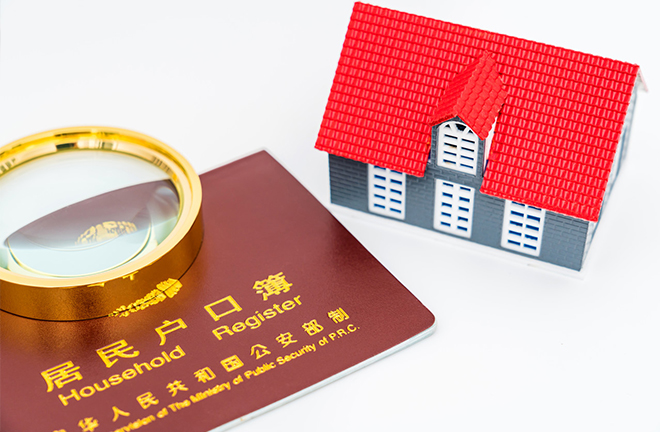China continues household registration reform

The hukou system appears to be a form of household registration, but behind it is a mechanism for allocating public services and resources. Photo: TUCHONG
On July 31, the State Council, China’s cabinet, unveiled a five-year action plan on implementing people-centered new urbanization strategy, which stressed the importance of further deepening reform to the household registration, or hukou, system.
China’s hukou system can be traced back to ancient times, when population management had already been organized by household. The system took shape in the Qin and Han dynasties in order to facilitate population statistics and tax collection, and maintain social stability. After continual reforms, household registration reached new heights of lean management in the Ming and Qing dynasties, characterized by the institution of the Yellow Registers and the Fish-Scale Books. Since modern times, dramatic social shifts and regime changes prompted significant revamps to the hukou system.
In the early stage after the PRC was founded, the new Chinese government promulgated household registration regulations in 1958 to meet the demands of socialist construction, marking the establishment of the modern hukou system. This system drew a clear line between agricultural and non-agricultural households, aiming to control population flows between urban and rural areas, and ensure labor supply for the industrialization drive.
Meanwhile, under the planned economy model, the hukou was closely tied to social benefits like oil and grain allotments, employment, education, and medical care, bringing into being a dual urban-rural structure.
According to Gong Weibing, a professor from the Party School of the Central Committee of the CPC (National Academy of Governance), the hukou policy was adopted as a last resort under the circumstances back then. In very tough conditions, this population management system helped lay a preliminary foundation for industrialization, but at the same time, it seriously jeopardized rural residents’ interests, affecting their enthusiasm and creativity in the workforce.
Before the 18th CPC National Congress in 2013, despite rapid urbanization, limitations imposed by the hukou system led the urbanization of land to outpace population urbanization, Gong noted. Many rural migrants remained disadvantaged although they had worked and lived in cities for many years. Although the urbanization rate of permanent residents reached 53.7% in 2013, the rate of residents with an urban hukou was only 35.7%.
Gong observed that a large number of migrants had not truly settled in urban areas, a factor that substantially hindered urbanization.
To address this problem, following the 18th Party congress, the new urbanization strategy was proposed to promote people-centered urbanization, ensure equal rights of the migrant population, and facilitate their integration into cities, thereby achieving sustained, healthy urbanization. The hukou reform was considered the institutional basis for this new urbanization strategy.
In 2014, the State Council’s new guideline on the hukou reform abolished the distinction between agricultural and non-agricultural households, and unified them as resident households. This reform signaled a major breakthrough to the hukou system.
Thereafter, thresholds for obtaining urban residency were progressively lowered. The most important regulatory change was the institution of residence permits. The interim regulations on residence permits, formulated by the State Council in October 2015 and taking effect on Jan. 1, 2016, bridged the gap between qualified migrants and local urban residents in related rights and interests.
Gong explained that the original intention of all regulatory adjustments and reforms was to loosen control over household registration, facilitate the free flow of rural people to cities, reduce unequal rights and public services attached to the hukou, and generally promote social equity and justice, with a view to fuel Chinese industrialization, urbanization, and the development of the market economy.
According to fresh data released by the National Bureau of Statistics on Sept. 23, the urbanization rate of permanent residents attained 66.16% at the end of 2023, and the rate of registered urban residents increased to 48.3%.
In 2024, the hukou reform has continued. The resolution adopted at the Third Plenary Session of the 20th CPC Central Committee in July called for efforts to explore avenues for establishing a unified national population management system.
Wu Xianjiang, a professor from the School of Public Security at People’s Public Security University of China, explained that the unified national population management system encompasses management of population registration, demographic information, and population services. The unified approach to population management nationwide will safeguard Chinese citizens’ lawful rights more effectively, bring convenience to their social life, comprehensively upgrade public services, and advance economic and social development, while providing foundational underpinnings for social governance and national security.
Edited by CHEN MIRONG
